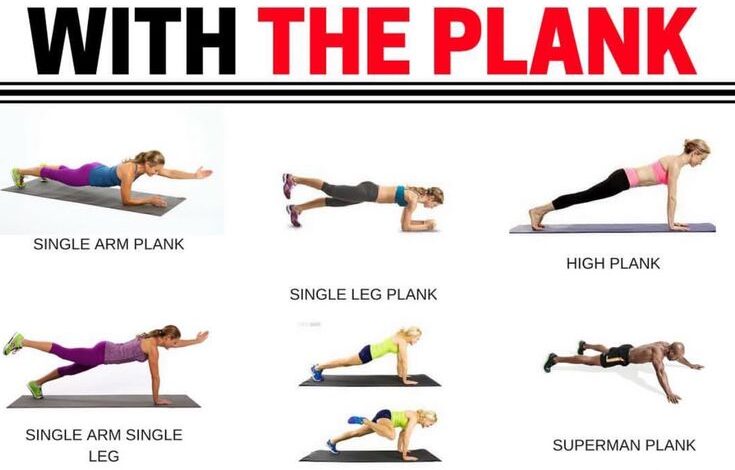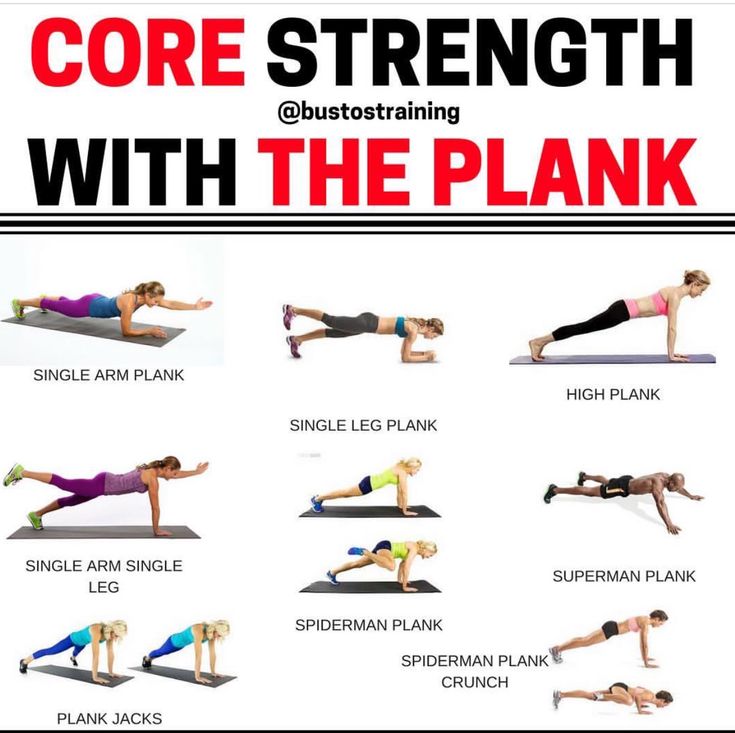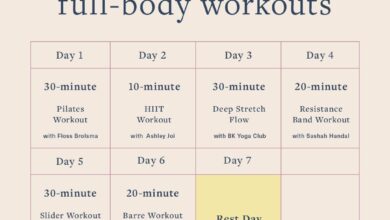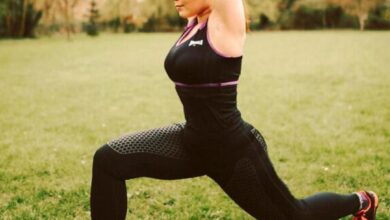
10 Plank Variations to Challenge Your Core
Ready to take your core strength to the next level? 10 Plank Variations to Challenge Your Core is your guide to unlocking a whole new world of core-crushing exercises. The humble plank, a seemingly simple exercise, holds a surprising amount of potential.
It’s not just about holding a position; it’s about engaging your entire core, building stability, and challenging your body in new ways. This article will explore a range of plank variations, from beginner-friendly to advanced, helping you find the perfect challenge for your fitness journey.
Whether you’re a seasoned fitness enthusiast or just starting out, there’s a plank variation for you. We’ll cover the basics, including proper form and technique, and then dive into a variety of modifications that target different muscle groups and increase difficulty.
You’ll learn how to incorporate these exercises into your workout routine and progress safely and effectively. Get ready to strengthen your core, improve your balance, and unlock a whole new level of fitness.
Introduction to Plank Variations
The plank is a foundational exercise that strengthens your core, improves posture, and enhances stability. It engages multiple muscle groups, including your abs, obliques, back, and glutes, making it a highly effective exercise for overall fitness. Mastering the basic plank position is crucial before progressing to more challenging variations.
The Basic Plank Position
The basic plank position is the foundation for all plank variations. It involves holding your body in a straight line from head to heels, supported by your forearms and toes. Your elbows should be directly below your shoulders, and your body should form a straight line from your head to your heels.
Engaging your core muscles is essential to maintain this straight line and prevent your hips from sagging or your back from arching.
Versatility of Plank Variations
Plank variations offer a diverse range of challenges that target different muscle groups and enhance your core strength in various ways. These variations involve modifying the basic plank position by adding movements, props, or changes in body positioning. For example, side planks target your obliques, while high planks engage your shoulders and chest more.
By incorporating these variations into your workout routine, you can continuously challenge your core and achieve optimal results.
Beginner-Friendly Plank Variations
The plank is a fundamental exercise that strengthens your core muscles, which are essential for stability, balance, and overall fitness. This exercise can be modified to suit different fitness levels, making it accessible to beginners. Let’s explore some beginner-friendly plank variations that will help you build a strong foundation for more advanced core work.
The Standard Plank
The standard plank is the foundation for all other variations. It involves holding your body in a straight line from head to heels, engaging your core muscles to maintain stability.
- Start in a push-up position with your hands shoulder-width apart and your body forming a straight line from head to heels.
- Engage your core muscles by drawing your belly button towards your spine. This will help to stabilize your body and prevent your hips from sagging.
- Keep your head in line with your spine, looking straight down. Avoid letting your head drop or lift too high.
- Hold this position for as long as you can, focusing on maintaining proper form.
The Forearm Plank
For beginners, the forearm plank offers a modified version of the standard plank, making it easier to maintain proper form.
- Start on your forearms with your elbows directly below your shoulders, shoulder-width apart. Your body should be in a straight line from head to heels.
- Engage your core muscles by drawing your belly button towards your spine.
- Keep your head in line with your spine, looking straight down.
- Hold this position for as long as you can, focusing on maintaining proper form.
The High Plank
The high plank is a more challenging variation that engages your shoulders and chest muscles more effectively.
- Start in a push-up position with your hands shoulder-width apart and your body forming a straight line from head to heels.
- Engage your core muscles by drawing your belly button towards your spine.
- Keep your head in line with your spine, looking straight down.
- Hold this position for as long as you can, focusing on maintaining proper form.
Intermediate Plank Variations
Once you’ve mastered the basic plank and its beginner-friendly variations, it’s time to level up your core strength with intermediate plank variations. These moves introduce new challenges, targeting different muscle groups and enhancing your overall stability and control.
Side Plank
The side plank is a great exercise for targeting the obliques, which are the muscles that run along the sides of your torso. This exercise requires you to hold your body in a lateral position, engaging your obliques to maintain stability.
The side plank is a highly effective exercise for strengthening the obliques, which play a crucial role in core stability and rotational movements.
To perform a side plank:
- Start in a push-up position, then rotate your body to the right, stacking your right forearm and hand on the floor.
- Extend your left leg straight out behind you and your left arm straight up toward the ceiling.
- Engage your core, glutes, and obliques to maintain a straight line from your head to your feet.
- Hold this position for 30 seconds, then repeat on the other side.
Elbow-to-Knee Plank
The elbow-to-knee plank focuses on core rotation and stability. This dynamic variation involves bringing your elbow to your opposite knee, challenging your core to control the movement and maintain balance.
The elbow-to-knee plank engages your core in a dynamic way, improving your ability to stabilize your body during rotational movements.
To perform an elbow-to-knee plank:
- Start in a plank position with your forearms on the floor and your body in a straight line.
- Bring your right elbow towards your left knee, drawing your knee towards your chest.
- Return to the starting position and repeat on the other side.
- Continue alternating sides for 10-15 repetitions.
Plank with Leg Raises
The plank with leg raises strengthens your lower body, particularly your glutes and hamstrings. This variation involves lifting one leg at a time, requiring your core to work harder to maintain stability and balance.
Plank with leg raises challenges your core to stabilize your body while engaging your lower body muscles, contributing to overall strength and functional fitness.
To perform a plank with leg raises:
- Start in a plank position with your forearms on the floor and your body in a straight line.
- Engage your core and lift your right leg off the ground, keeping your leg straight and your toes pointed.
- Lower your leg back down and repeat on the other side.
- Continue alternating sides for 10-15 repetitions.
Advanced Plank Variations
Ready to take your plank game to the next level? These advanced variations demand exceptional core strength, balance, and coordination. They push you beyond your comfort zone, enhancing your overall fitness and stability.
Ready to take your core strength to the next level? 10 plank variations are a great way to challenge your stability and build muscle. But let’s be honest, sometimes the pressure of a tough workout can lead to stress.
If you need a quick break, check out this article on 8 quick ways to reduce stress right now and come back refreshed and ready to conquer those planks!
Single-Arm Plank
The single-arm plank challenges your core strength and balance. It requires you to maintain stability while lifting one arm off the ground, forcing your core muscles to work harder to keep your body aligned.
- How to Perform:Start in a standard plank position with your forearms on the ground and your body in a straight line from head to heels. Engage your core and slowly lift one arm off the ground, extending it straight out in front of you.
Hold for a few seconds, then return to the starting position. Repeat with the other arm.
- Benefits:The single-arm plank strengthens your core, improves your balance, and enhances your stability. It also targets your obliques and shoulders, building overall strength and coordination.
- Tips:Keep your core engaged and your body in a straight line throughout the exercise. Focus on maintaining balance and avoid swaying your hips. Start with short holds and gradually increase the duration as you get stronger.
Plank with Shoulder Tap
The plank with a shoulder tap adds a dynamic element to the traditional plank, requiring you to coordinate your movements while maintaining stability. It engages your core, shoulders, and back, promoting core strength and coordination.
- How to Perform:Begin in a standard plank position. Engage your core and slowly lift one hand off the ground, reaching across your body to tap your opposite shoulder. Return your hand to the ground and repeat on the other side.
Continue alternating sides.
- Benefits:This variation enhances your core strength, coordination, and stability. It also improves your shoulder mobility and flexibility. It’s a great exercise for building functional strength.
- Tips:Keep your core engaged and your body in a straight line throughout the exercise. Avoid swaying your hips or arching your back. Focus on controlled movements and maintain balance as you tap your shoulders.
Plank with Leg Extension
The plank with a leg extension challenges your core strength and flexibility. It requires you to engage your core to maintain stability while extending one leg, increasing the demand on your abdominal muscles.
- How to Perform:Start in a standard plank position. Engage your core and slowly lift one leg off the ground, extending it straight behind you. Hold for a few seconds, then return to the starting position. Repeat with the other leg.
- Benefits:This variation enhances your core strength, flexibility, and stability. It also strengthens your glutes and hamstrings. It’s an effective exercise for improving your overall functional fitness.
- Tips:Keep your core engaged and your body in a straight line throughout the exercise. Avoid arching your back or swaying your hips. Focus on controlled movements and maintain balance as you extend your leg. Start with short holds and gradually increase the duration as you get stronger.
Strengthening your core with 10 plank variations is a great way to build stability and improve your overall fitness, but don’t forget to fuel your body with delicious and nutritious meals. If you’re looking for ways to repurpose last night’s dinner into a satisfying breakfast, check out 5 ways turn last nights leftovers mornings breakfast.
Once you’ve refueled, you’ll be ready to tackle those challenging plank variations and build a stronger core.
Tips for Performing Plank Variations Safely and Effectively
Mastering plank variations requires a blend of strength, stability, and mindful execution. Proper form is paramount to reaping the benefits of these exercises while minimizing the risk of injury.
Maintaining Proper Form, 10 plank variations to challenge your core
Maintaining proper form is crucial for maximizing the effectiveness of plank variations and minimizing the risk of injury. Here are some key points to remember:
- Engage Your Core:Imagine drawing your belly button towards your spine, activating your abdominal muscles. This creates a stable foundation for the entire exercise.
- Maintain a Straight Line:From your head to your heels, strive to maintain a straight line. Avoid sagging in the middle or letting your hips rise too high. This ensures proper engagement of your core muscles.
- Keep Your Shoulders Over Your Wrists:In a standard plank, ensure your shoulders are directly above your wrists. This alignment prevents strain on your wrists and shoulders.
- Keep Your Neck Neutral:Avoid tilting your head up or down. Keep your gaze slightly forward, maintaining a neutral spine position.
Avoiding Common Mistakes
While plank variations offer a variety of challenges, some common mistakes can hinder your progress and increase your risk of injury.
- Sagging in the Middle:This indicates a lack of core engagement. Engage your core muscles to maintain a straight line from head to heels.
- Hips Too High:This can put unnecessary stress on your lower back. Keep your hips in line with your shoulders and knees.
- Rounding Your Back:This can strain your spine. Keep your back flat and your core engaged.
- Holding Your Breath:This can lead to dizziness and lightheadedness. Breathe deeply and steadily throughout the exercise.
Gradual Progression and Listening to Your Body
As with any exercise program, gradual progression is key to achieving your fitness goals and minimizing the risk of injury.
- Start with Beginner Variations:If you’re new to planks, begin with beginner-friendly variations like the standard plank or forearm plank. Gradually increase the duration or add more challenging variations as you build strength and stability.
- Listen to Your Body:If you experience any pain, stop immediately. Don’t push yourself beyond your limits. Your body will tell you when it needs a break.
- Rest and Recover:Allow your body time to recover between workouts. This ensures you’re adequately prepared for the next session.
Modifications for Individuals with Injuries or Limitations
Plank variations can be modified to accommodate various injuries and limitations.
Strengthening your core with 10 plank variations is a great way to build functional strength, but let’s be real, sometimes you just crave a slice of pizza! If you’re looking for a guilt-free way to satisfy your cravings, check out this list of 11 healthy pizzas under 400 calories.
After your pizza-fueled recovery, get back to those planks and keep pushing your limits!
- Wrist Pain:Perform the plank on your forearms, or modify the exercise by placing your forearms on a rolled-up towel or mat.
- Back Pain:Avoid exercises that put excessive pressure on your lower back. Consider modifications like a knee plank or a modified plank with your knees on the ground.
- Shoulder Pain:Avoid exercises that put stress on your shoulders. Focus on beginner variations and progress slowly.
Incorporating Plank Variations into a Workout Routine
Plank variations can be incorporated into various training programs, adding a challenging and versatile element to your fitness regimen. Integrating these exercises effectively requires a strategic approach, considering factors such as your fitness level, goals, and recovery needs.
Integrating Plank Variations into Different Training Programs
Plank variations can be seamlessly integrated into various training programs, including strength training, HIIT workouts, and even yoga routines.
- Strength Training:Plank variations can be included as a core exercise within a strength training routine. For example, you could perform 3 sets of 30 seconds of each plank variation after completing your primary compound exercises, such as squats, deadlifts, and presses.
- HIIT Workouts:Plank variations can be incorporated as part of the high-intensity intervals in a HIIT workout. You could alternate between plank variations and other cardio exercises like jumping jacks, burpees, or mountain climbers.
- Yoga:Plank variations can be included as part of a yoga flow, enhancing core strength and stability. You can transition between plank variations and other yoga poses like chaturanga dandasana (low plank pose) and upward-facing dog.
Importance of Proper Rest and Recovery Between Sets
Rest and recovery are crucial for muscle growth and preventing injury. Between sets of plank variations, allow your body to recover for 30-60 seconds. This time allows your muscles to replenish energy stores and prevents fatigue.
Tracking Progress and Increasing Difficulty Over Time
Tracking your progress and gradually increasing the difficulty of plank variations is essential for continuous improvement.
- Tracking Progress:Keep a workout log or use a fitness app to track your plank hold times. Aim to increase your hold time by a few seconds each week.
- Increasing Difficulty:Once you’ve mastered a plank variation, you can increase the challenge by adding weights, elevating your feet, or incorporating more dynamic movements. For example, you could progress from a basic plank to a weighted plank, then to a forearm plank with a leg raise, and finally to a side plank with a hip raise.
Last Recap: 10 Plank Variations To Challenge Your Core

By incorporating these plank variations into your routine, you’ll not only strengthen your core but also improve your overall fitness and stability. Remember to listen to your body, progress gradually, and most importantly, have fun! The plank is a versatile exercise that can be adapted to suit your fitness level and goals.
So, embrace the challenge, explore the variations, and get ready to see amazing results in your core strength and overall well-being.






